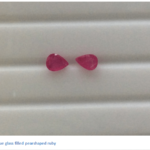Gemstone-rough-quality-factors-and-different-grades-rough
Size, quality, and origin are the factors that matter in the raw material of gemstone. Here is a detailed study of these three factors –
1. Size – Major unit of rough is gram and it is divided into different lots like 0-2 grams, 2-5 grams, 5-10 grams, 10-20 grams, 20grams+, etc. Big size rough are cheaper in low-priced semi precious stones like lapis, moonstone, smoky quartz, crystal quartz, etc. (Based on per gram). In middle price and high price stone, big sizes are higher in prices.
2. Origin – Origin is another factor that plays a vital role. For example, Blue sapphire raw materials come from Kanchan Buri (Thailand), Ceylon, Burma, and many other mines. Thailand sapphire rough is low priced in all these and available in big sizes as well so basically you can understand in a simple line that “rarer is more expensive”.
3. Quality and color – Transparency, color intensity, and clarity are other factors. The quality and color of raw material decide the market scenario. Basically high-end market, medium-end market, and commercial grade are three. For example – Ruby rough from Burma mines come in different grade and it is classified into different grade as their market is different because one who makes high-end jewelry will not be interested in commercial-grade rough.
Above three factors are parameters to divide color stone rough into different grades, below we are mentioning some grades –
1. Auction grade
2. Facet Gemstones grade
3. Cabochon Grade
4. Beads and carvings grade
5. Pyramids/Tumbles/Eggs grade
1. Auction grade – Material that is very rare and found unusually comes in this grade. For example – A 5-carat pigeon blood ruby clean quality from Burma mines which is very rare and mainly sold in auctions. You can call it the “gemstone collector zone” also.
2. Facet Gemstone grade – Facet gemstone rough come in this grade, further, it also divides into A, AA, and AAA grades. Inclusions can be seen easily in facet gemstones so mainly clean rough is used. This grade is next after auction quality material. Check the picture of Tanzanite gemstone which is clear and good in color.
3. Cabochon quality- Rough which comes in eye-visible inclusions in the center (not heavily included) comes in this range. Below mentioned picture of a tanzanite cab in which inclusions are clearly visible so this sort of material is used for cabs. Basically, top-quality rough material is used for faceted stones and medium to low-grade material is used to make cabochons, beads. You can easily get 10 carats up size tanzanite cabochons for 10$-15$ per carat. Cabochon’s price factors are the same; type of stone, clarity, shape, and size.
3. Beads and carvings – Less transparency, light color, and a grade material is used for beads and carvings.
4. Pyramids/Tumbles/Eggs quality – Fancy items like pyramids, wands, tumbles, eggs, trees, pendulum, and many other items are made by the lowest grade gemstone. Mainly it is found in opaque gems. Basically, top-quality rough material is used for faceted stones and medium to low-grade material is used to make cabochons, beads. You can easily get 10 carats up size tanzanite cabochons for 10$-15$ per carat. Cabochon’s price factors are the same; type of stone, clarity, shape, and size. Below mentioned material eggs, pyramids, tumbles are made of poor quality material and you can easily get it at very cheap prices. All prices for eggs come either per piece or per kg.
Above mentioned categories are implemented in the general gemstone industry although cabochons, beads, pyramids are possible in 100% clean quality on an order base price comes 2 to 3 times when you order beads/cabochons in facet quality.




